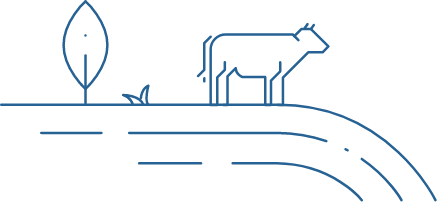Shiga-toxin-producing Escherichia coli (STEC)
A factsheet answering key questions on STEC, such as ‘what are they?’ ‘who is vulnerable?’ and ‘why is it relevant to dairy products?’
Shelf-life of Dairy Products – Questions & Answers
Can I eat this food product after the “best before” or “use by” date? This food does not smell or look bad even though its “use by” date has expired. Is it still safe to consume? Why did my milk not last until its best before date?
Shelf Life of Dairy Products
Product shelf-life information on pre-packaged foods plays an important role in consumers’ choices at the time of buying or consuming a food product. Shelf-life can provide consumers with information on product quality, safety and convenience.
Dairy Industry Salts
Excessive salts, especially sodium, can have an adverse effect on the environment. If the proportion of sodium to other cations is high when dairy plant wastewater is applied to land, the soil structure risks deterioration. If so, the soil can no longer treat the applied wastewater and becomes water logged.
Salts and the Environment – IDF Factsheet 1
Salts K, Na and Ca occur either in milk from farms or in the chemicals used to clean the manufacturing plants. These salts end up in wastewater which is then discharged into the environment. This factsheet describes the sources of salts in the dairy industry and their effects on the environment.
Risk-based food safety management
This factsheet explains what risk-based food safety management is, why is it important, how risk-based food safety management is structured and also presents succinctly what the dairy industry is doing.
Protein Determination
Protein is one of the main constituents of milk along with fat, lactose and water. Proteins are comprised of individual amino acids linked together by peptide bonds. There are 20 amino acids that are common to most living organisms. The different protein molecules are folded into complex structures and perform a range of functions in […]
Nutrient Rich Dairy Foods and You
This factsheet provides further information on how dairy products can provide a package of nutrient to help your body stay healthy.
Mycobacterium Avium Subspecies Paratuberculosis (MAP)
Mycobacterium avium ssp. paratuberculosis (MAP) is a bacterium which causes Johne’s disease, also known as Paratuberculosis, in ruminant animals including cattle, sheep, deer, goats and buffalo. Find out more about the many control programmes that are undertaken at the dairy farm level all over the world to reduce the incidence of MAP in milking animals.
Microbial food cultures
This factsheet provides information on fermentation, microbial food cultures and also presents what the dairy industry is doing.






